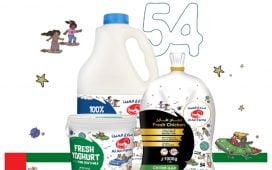
My first introduction to strategy was through a quote by W. Edwards Deming, ‘In God we trust; all others must bring data’, which was printed in big bold letters and pinned on my then manager’s office door.
Coming in with starry-eyed passion for creating applaudable creative narratives, focus on data seemed out of place. I believed strategists championed culture (only), and at the time, culture and data seemed like two ends of the spectrum.
Culture of course painted with diverse colors of humanity – and well – data quite devoid of it. Data seemed colorless, sitting in a black and white Excel sheet, making me wonder if it could ever lend itself into a vivid, engaging story. Needless to say, all these preconceived notions went out the window over time – part by part. This was 2010.
Aha Moment One: Culture
As the years went by, the realisation about how lopsided my view on data had been began to set in. Especially as I started working more on the FMCG brands. The acronym quite literally gives it away. Fast moving consumer goods (products, to me and you) require quick adaptation and hence there is a need for constantly monitoring trends and behaviours. And given the nature of the category, this also means that data (raw and analysed) is aplenty.
For the first time, I realised I had a new color palette at hand in addition to the one I had an intuitive passion for – culture. Everytime I lay a cultural analysis against the background of diverse data available, a new and exciting picture seemed to form. It was exhilirating like handing over play doh into a child’s hand. But this was just the start.
As time went by, and my portfolio as a strategist diversified, initial attempts at drawing data sketches started solidifying into potent data stories.
Aha Moment Two: Real-time data
Cut to Covid. Data became a buzzword like never before. The cultural shifts with the ‘new normal’ were happening at a lightning pace because consumer behaviours and preferences were now defined online. Digital, social, were exploding because that is how we now interfaced with culture. This surge obviously meant that now brands had a lot more of valuable and real-time data pouring in.
This was the real eye opener. To narrate an engaging story in an over-crowded digital space, culture, data and strategy had to move in tandem seamlessly and swiftly. The rapid changes that enveloped humanity necessitated real time insights to be factored in for culturally sensitive responses. This alignment was the only way brands could maintain trust, and relevance amidst chaos.
A good testimony to this comes from various music streaming platforms during this period. They leveraged real-time data insights into the listening habits of people as they adapted to new routines, such as working from home, cooking, home workouts, and meditation.
They promoted personalised playlists and introduced features for shared listening experiences based on emerging patterns. Most importantly, they captured the commonality that lay across these diverse data patterns – the fact that music is a great unifier during times of isolation. This led to another big realisation.
Aha Moment Three: The “why”
Transforming data into compelling stories isn’t just about finding patterns. It’s about understanding the “why” behind those patterns. Kind of like Simon Sinek’s Golden Circle* emphasising on starting with the ‘why’ of storytelling before addressing the how and the what.
This simple framework is most useful for guiding data-driven storytelling much like it is for brand storytelling in general because all stories – data or non-data – need a solid ‘why’.
Tools like Global Web Index (GWI) or Target Group Index can help uncover the ‘why’ by providing easily accessible and actionable insights that guide strategic thinking and eventually creative work. It’s like doodling with data – each stroke adding to the bigger picture, revealing a story that’s waiting to be told.
For example, a travel company discovers through GWI that their intended customers prioritise eco-friendly travel, not just for the experience (the ‘What’), but because they deeply care about reducing their carbon footprint and preserving nature. This is their ‘why’.
In the very least, this easily available, simple data will add more structure to creative brainstorm sessions where the struggle is often to find a starting point. And at the very most, it will inspire some disruptive thinking that will help create work that strongly resonates with its audience.
With time as one starts observing the interplay between data and behavior or data and culture more closely, the doodles begin shaping up into solid art work that start delivering performance based results.
Aha Moment Four: Personalised approach
Back in the day if anyone would have said that cultural storytelling can be converted into performance centered results, they probably would have been met with a certain cynicism. I would have been one of those cynics. But the fact that data insights help add more color and vivacity to the portrait of cultural storytelling to a point that it’s impact becomes measurable, is a game changer. It is truly making efforts towards integrated marketing showing tangible results.
Consider a fashion retailer’s use of personalised shopping recommendations, for example. By collecting both small data on individual user behaviour—like previous purchases and browsing history—and big data on broader fashion trends, the service can generate multiple outfit suggestions that appeal to different tastes: a customer with a preference for sustainable fashion might see recommendations for eco-friendly clothing lines, while a trendsetter might see the latest runway styles. This personalised approach converts data into performance with higher conversion rates, significantly enhancing user experience.
Most importantly, this approach illustrates the interplay between ‘small’ data doodles and ‘big’ data doodles in creating compelling narratives. The small data insights reflect individual preferences, while the big data insights provide an understanding of broader fashion trends and behaviors. Continuously refining these doodles based on real-time data not only enhances engagement but also shows the increasing need to humanise data.
Aha Moment Five: Empathy and experience
Humanising data is nothing more than making data relatable, and meaningful to humans. And most importantly this is not rocket science. While a certain predisposition towards data helps, it is actually creativity and empathy that truly shapes up data doodles into meaningful and rich stories.
A first most useful step is to simplify spreadsheets into insights that answer the ‘why’. For example, rows and columns of data on brands consumed as a mid-night snack versus sorting them into the cravings they solve (the ‘why’) – a chocolate craving, the craving for something spicy or the craving for a beloved childhood snack.
The next simple step is really to empathetically locate this ‘why’ in people’s lives – a chocolate craving at midnight helps comfort me before bed. This is where a mix of experiential knowledge helps – experience on the brand, the audience and the overall culture. A good place for the strategy and creative interplay. And finally, all that is needed is creative love and craft to bring this story to life!
This also brings us to the finale of our story here. So what is the gist of these 5 momentous ‘Aha’s’?
Data insights are not the polar opposite of cultural insights. The two offer two different color palettes to add more life to creative storytelling. Culture is like the base color that gets more accentuated with data in the final creative artpiece.
The trick is to humanise data. Making it relatable, meaningful, by defining a strong ‘why’ with it. This will liberate it from the shackles of the black and white rows and columns on Excel and transform it from numbers into a narrative. A narrative that will inspire, engage and most importantly deliver results. And you’ll be pleasantly surprised by how the boring, monochromatic data can yield a colorful kaleidoscope of powerful stories.
By Astha Sirpaul, strategy director, TBWA\RAAD









